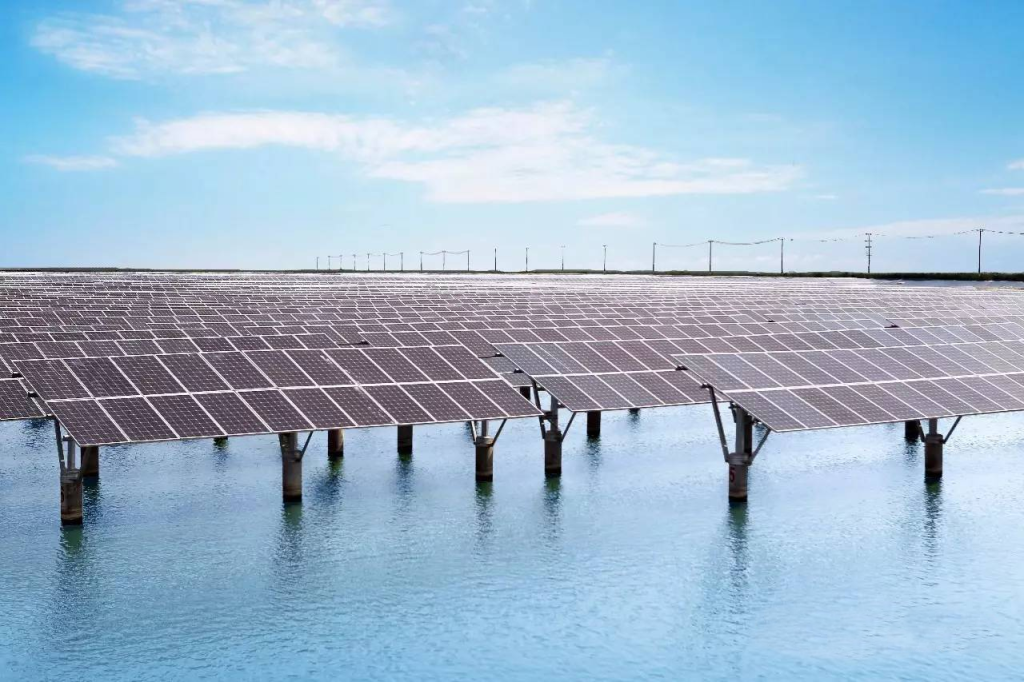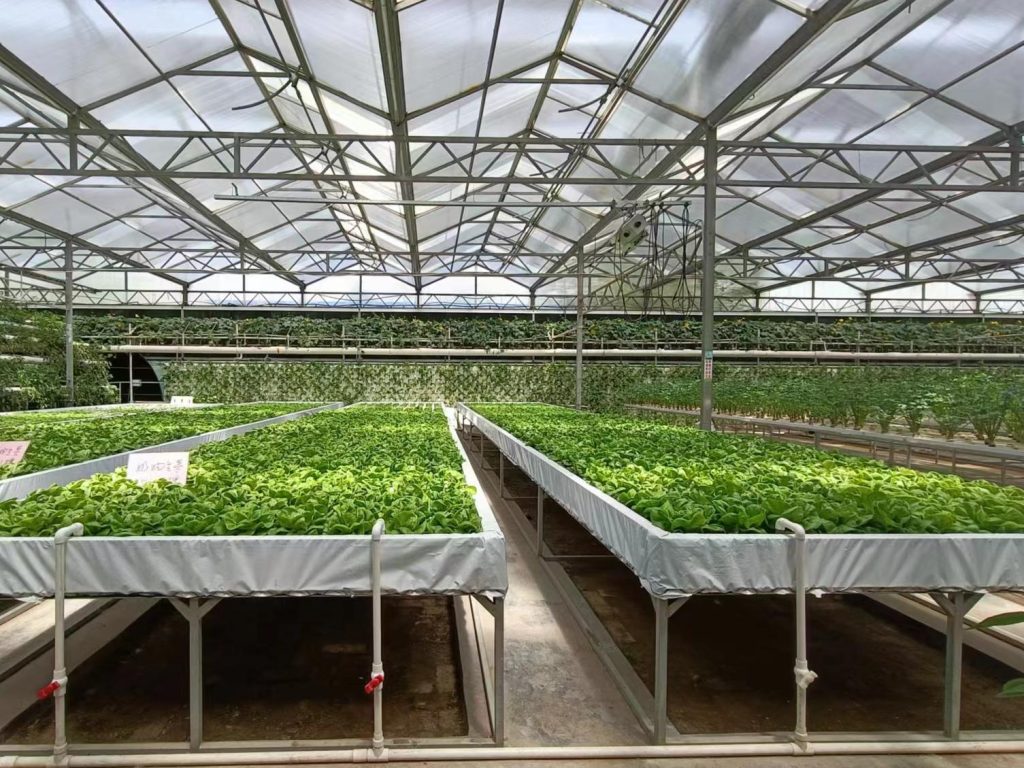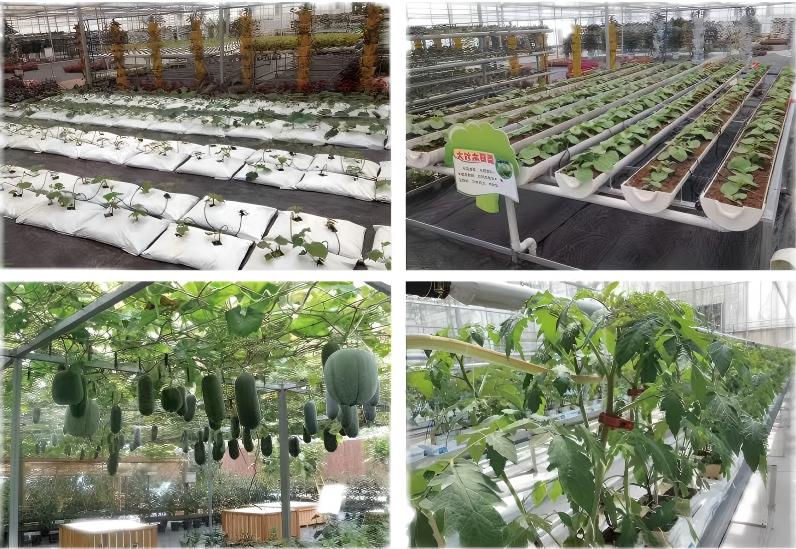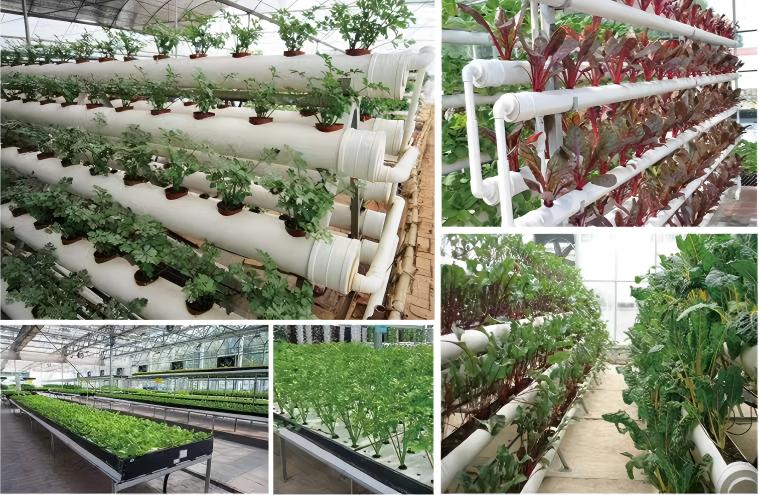Fish-light complementarity
Fish-light complementarity means that a photovoltaic panel array is set up above the water surface of the fish pond, and the waters below the photovoltaic panel can be cultured for fish and shrimp, and the photovoltaic array can also provide a good shelter for fish farming, forming a new power generation model of “upper power generation and lower fish farming”. This model can not only save land resources, but also improve the economic value of the unit area.
Land-based fish-light complementarity is a model that combines intensive aquaculture and photovoltaic power generation built on land. This model usually sets up photovoltaic panels above the aquaculture pond, using solar energy to generate electricity, while the aquaculture pond below carries out fish farming, achieving double use of land. Land-based recirculating aquaculture system model is a form of land-based fish-light complementarity. Through centralized breeding of feeding fish and equipped with efficient tailwater treatment system, aquaculture water recycling can be realized, which has the characteristics of land saving, water saving and ecological environmental protection.

Aquaponics
Aquaponics is a technology that combines aquaculture and hydroponics to achieve synergistic symbiosis through ecological design. In this system, fish waste is converted into nutrients that can be absorbed by plants, while plant growth helps to purify water and form a sustainable, circular, zero-emission, low-carbon production model. The aquaponics system can be divided into various cultivation modes according to specific cultivation methods, including substrate culture, deep-water floating raft culture, nutrient film pipeline culture and aerosol culture.
The combination of land-based fish-light complementarity and aquaponics technology can improve the yield per unit area, and realize the efficient use of resources and the sustainable development of the environment. This combination model not only improves the economic benefits of agricultural production, but also helps promote the transformation of agriculture into a green, ecological and efficient direction. For example, in Shandong Province, China, the fish-light complementarity and fish-vegetable symbiosis model have been applied in many areas, achieving multiple benefits of green power generation and fish and vegetable harvest.

Substrate Cultivation
Substrate Cultivation is a kind of soil-less cultivation that has the biggest promotion area.It fixes the crops roots in organic or inorganic matrix,supply nutrient for crop through drip or trickle irrigation.Cultivation matrix can be loaded into plastic bag,or laid in cultivation groove or trough. Nutrient solution of substrate cultivation is not cycle,which can avoid disease spread through the cycle of nutrient solution. Substrate Cultivation has strong buffer ability,and there is no contradiction between moisture,nutrients, and oxygen supply.In addition,substrate cultivation has easy equipment,sometimes does not need any power. therefore,it is less investment, low cost,common application.

Hydroponic cultivation
Hydroponic cultivation refers to plant roots directly in the nutrient solution without substrate cultivation.The most famous and common hydroponics is Nutrient Film Technique(NFT),its working principle: Make a very thin layer of nutrient solution (0.5-1.0cm) cycle through the crop root,not only ensure continuous water and nutrient supply for crop,but also fresh oxygen supply for the root. NFT cultivation method greatly simplifies the irrigation technology,need not calculate crop water requirement everyday, and can ensure balanced nutrients supply,NFT cultivation method takes part roots from the soil, avoiding all sorts of soil borne disease,also no need for soil disinfection.

What are the advantages of developing urban agriculture with aquaponics?
Firstly, it conserves energy.
Aquaponics systems do not require water changes; the only consumption is due to natural evaporation and plant absorption. Traditional aquaculture models typically have a water replenishment rate of 50%, whereas aquaponics systems only need 5%, saving 95% of water compared to traditional methods.
Secondly, it saves land.
Aquaponics allows for high-density fish farming and high-density planting in the same area, producing both vegetables and aquatic products. Particularly, vertical farming models can significantly increase greenhouse vegetable yields.
Thirdly, it is low-carbon and environmentally
Traditional fish farming is a significant source of pollution. Aquaponics systems do not use fossil fuels; the only energy requirement is electricity. The system filters fish waste through physical and biological processes, converting it into “nutrient solution” for plants, achieving a new model of “zero discharge” aquaculture.
Fourthly, it is not limited by seasons or climate.
The aquaponics model can cycle continuously and produce throughout the year.
Fifthly, it saves labor.
Fifthly, it saves labor. Aquaponics is a form of soil-less cultivation, involving no heavy physical labor or interaction with soil. The system operates semi-automatically, significantly reducing labor costs. As the national agricultural workforce becomes increasingly scarce, the labor-saving benefits of aquaponics will become increasingly apparent.
The “aquaponics” model can be implemented on a large scale for production and display, or on a small scale for landscaping and consumption around the house, even on balconies. Currently, whether in urban or rural areas, aquaponics technology still has significant room for development. Governments, research institutions, and technology and social service organizations around the world are actively supporting the development of the “aquaponics” industry, providing technical support for practitioners, creating intelligent monitoring systems for aquaculture and automated harvesting systems, selecting and standardizing breeding varieties and techniques, strictly controlling pests and diseases; and actively promoting eco-tourism, promoting healthy and high-quality vegetables and fish produced by aquaponics technology. In terms of opening up information-based and diversified sales channels, the technological content has been improved, while also enhancing the economic benefits of cultivation and aquaculture.



-400x284.png)



